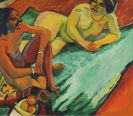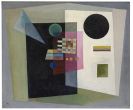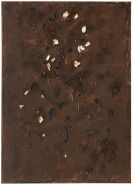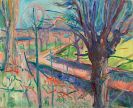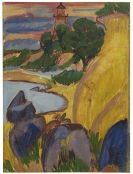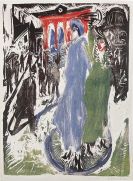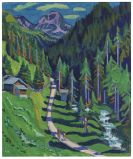
Hans Luckhardt
Berlin
1890 -
Bad Wiessee
1954
Born in Berlin in 1890, the architect and designer Hans Luckhardt studied architecture at the "Technische Hochschule" in Karlsruhe from 1909 until 1911. In the years that followed until 1920, Hans Luckhardt and his brother, Wassili Luckhardt, were members of several groups of artists, including the Workers' Art Council, the November Group, and The Ring.
In 1919-20 Hans Luckhardt belonged to the Glass Chain, a correspondence that was carried on by the architects Bruno and Max Taut, Hermann Finsterlin, Paul Goesch, Wenzel Hablik, Hans Hansen, Hans Scharoun, and Wassili Luckhardt. From 1921 Hans and Wassili Luckhardt had a joint practice in Berlin. Early works of the Luckhardt brothers', such as the 1921 Hygiene Museum in Dresden, were influenced by Expressionism. From 1925 Hans Luckhardt and his brother worked in a more rationalist style, which is also revealed in the furniture they designed.
The most important joint architecture projects realized by the Luckhardts include the row houses on Schorlemer Allee (1925-30), Haus Telschow (1928-29), redesigning Alexanderplatz (project, 1929).
In 1951 Wassili and Hans Luckhardt designed the Berlin Pavilion at the Constructa trade fair in Hannover. In the 1920s, Hans Luckhardt experimented with Anton Lorenz on what were called "movement chairs"; the "Siesta" chair for reconvalescents was produced by Thonet. With Wassili, Hans Luckhardt the "ST 14" standardized chair (1929), a piece of swinging seat furniture made of tubular steel and laminated wood. Slightly modified as the "S 36" swing chair, it was made to furnish the Desta House at the 1931 "Deutsche Bauaustellung" in Berlin.
In 1952 Hans Luckhardt became a professor at the Hochschule for Bildende Künste in Berlin, where he taught until his death in 1954.
Would you like to sell a work by Hans Luckhardt?
Infos for seller
